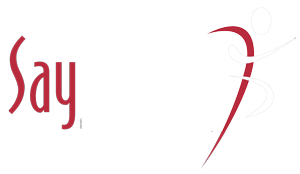
When you’re pressed for time, or just eager to start your workout, it can be tempting to skip a warm-up. But warming up before you exercise, especially before engaging in strenuous activity, has very real physiological, and often psychological, benefits. Here’s what to know to get the most out of your warm-up.
Benefits of a Proper Warm-Up
Warming up prepares your heart, lungs, and muscles for the more strenuous phase, the main focus of your workout. The American College of Sports Medicine (ACSM) compares a warm-up to driving on the on-ramp of a highway. The on-ramp gives you time to bring your vehicle up to the speed of traffic so as to avoid an accident while merging.
Here are the specifics of what happens to your body during a warm-up:
- Muscle temperature increases: Warm muscles both contract more forcefully and relaxes more quickly, reducing the risk of overstretching a muscle and causing injury. Your overall body temperature also increases, which improves muscle elasticity; this can enhance speed and strength.
- Blood temperature rises: The temperature of blood increases as it travels through the muscles. As blood temperature goes up, the binding of oxygen to hemoglobin weakens so oxygen is more readily available to working muscles, which may improve endurance.
- Blood vessels dilate: This increases blood flow and puts less stress on the heart.
- The range of motion increases: This allows your large joints (such as your shoulders and knees) to reach their maximum movement potential.
- You avoid overheating: By activating the heat-dissipation mechanisms in the body, your body can cool efficiently and help prevent overheating early on, which is especially important during a demanding aerobic activity, such as running or bicycling in a race.
- Hormonal changes occur: Your body increases its production of various hormones, including cortisol and epinephrine, which are responsible for regulating energy production. During a warm-up, this balance of hormones makes more carbohydrates and fatty acids available for energy production.
- You have a chance to mentally prepare: The warm-up is also a good time to mentally prepare for an event by clearing the mind, increasing focus, and reviewing skills and strategy. Positive imagery can also relax you and build concentration for a competition.
Tips for Warming Up
Workouts vary in terms of intensity and length, according to the type of exercise you do. Here are some general guidelines for getting a great warm-up that suits your needs.
- Keep it short: The ACSM recommends five to 10 minutes of low to moderately strenuous activity before most workouts.
- Tailor activities to your main workout: If you’re preparing for a brisk walk, then the warm-up could include slower-paced walking. For a more intense activity such as running, jogging would be appropriate. The point is to gradually increase the intensity from resting levels to the intensity of the next phase. For exercises that don’t include a lot of aerobic activity—such as yoga or Pilates—small movements, such as pelvic tilts, neck rolls, and cat-cow sequences will help the loosen the spine and other joints in preparation for the more demanding motions to follow. For a weightlifting workout, the range of motion exercises, such as shoulder rolls and knee lifts, are appropriate.
- Avoid static stretching: Static stretches are those in which you stay in one position. One example is sitting on the floor with your legs spread and leaning over one leg, holding onto your foot. Stretching a “cold” muscle in this way can increase the risk of injury from pulls and tears. Instead, do dynamic stretching, which involves continuously moving through a range of motion. Some examples include making big arm circles in both directions, kicking your legs forward, or touching your toes and then reaching for the sky. The key is to not hold any position. The best time to do static stretches is after exercise when your muscles are warm and pliable
- Focus.Plenty of sport psychology research indicates that mental imagery—essentially visualizing how you’ll succeed on the court or field—can dramatically improve performance. Even if you’re not a competitive athlete, it can help to take a moment or two to get in “the zone,” by closing your eyes and taking a deep breath before you start your warm-up and then proceed to your workout and cool-down.
Keep in mind that finding the perfect warm-up is a very individual process that can only come with practice, experimentation, and experience. Try warming up in various ways, at various intensities, until you find what works best for you.
Quinn, Elizabeth. “Prevent Injuries.” Verywell Fit, Verywellfit, 25 Sept. 2018, www.verywellfit.com/how-to-warm-up-before-exercise-3119266.

